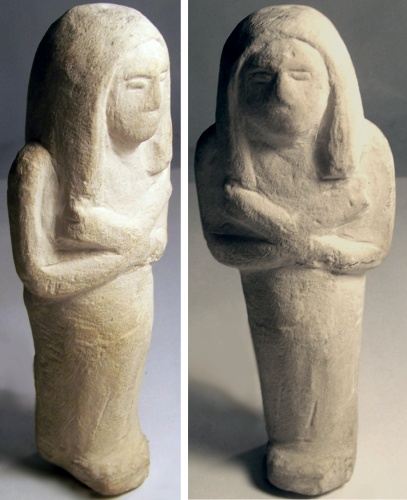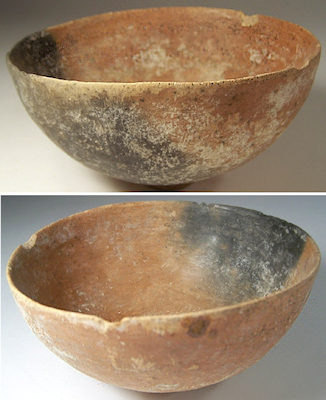Egyptian Antiquities
Egyptian Blue Faience Votive Cup with Cartouche of Amenhotep III, c. 1391 - 1350 B.C.

Amenhotep III, meaning Amun is Satisfied, was the ninth pharaoh of the Eighteenth dynasty. According to different authors, he ruledEgypt from June 1391 B.C. to December 1353 B.C., or June 1388 BC to December 1351 or 1350 B.C.
Egyptian, Limestone Ushabti, New Kingdom, XIX Dynasty, 1320 - 1200 B.C.

From the collection of Alex G. Malloy, former dealer in antiquities for 40 years.
Egyptian, Ptolemaic Period, Son of Ra Wooden Panel, 332 - 30 B.C.

Shu, the son of Ra, was the God of the earth and supporter of the heavens. He becomes the Atlas of the Greeks and is identified with Thoth.
From the collection of former dealer in antiquities for 40 years.
Egyptian, Pottery Bowl, Pre-dynastic, 3300 - 3006 B.C.

From the collection of Alex G. Malloy, former dealer in antiquities for 40 years.
5" Egyptian Bronze Figure of Osiris, 26th - 30th Dynasty, 664 - 342 B.C.

Egyptian Blue Faience Votive Cup with Cartouche of Amenhotep III, c. 1391 - 1350 B.C.

Amenhotep III, meaning Amun is Satisfied, was the ninth pharaoh of the Eighteenth dynasty. According to different authors, he ruledEgypt from June 1391 B.C. to December 1353 B.C., or June 1388 BC to December 1351 or 1350 B.C.
Egyptian, Limestone Ushabti, New Kingdom, XIX Dynasty, 1320 - 1200 B.C.

From the collection of Alex G. Malloy, former dealer in antiquities for 40 years.
Egyptian, Ptolemaic Period, Son of Ra Wooden Panel, 332 - 30 B.C.

Shu, the son of Ra, was the God of the earth and supporter of the heavens. He becomes the Atlas of the Greeks and is identified with Thoth.
From the collection of former dealer in antiquities for 40 years.
Egyptian, Pottery Bowl, Pre-dynastic, 3300 - 3006 B.C.

From the collection of Alex G. Malloy, former dealer in antiquities for 40 years.
5" Egyptian Bronze Figure of Osiris, 26th - 30th Dynasty, 664 - 342 B.C.








تعليق